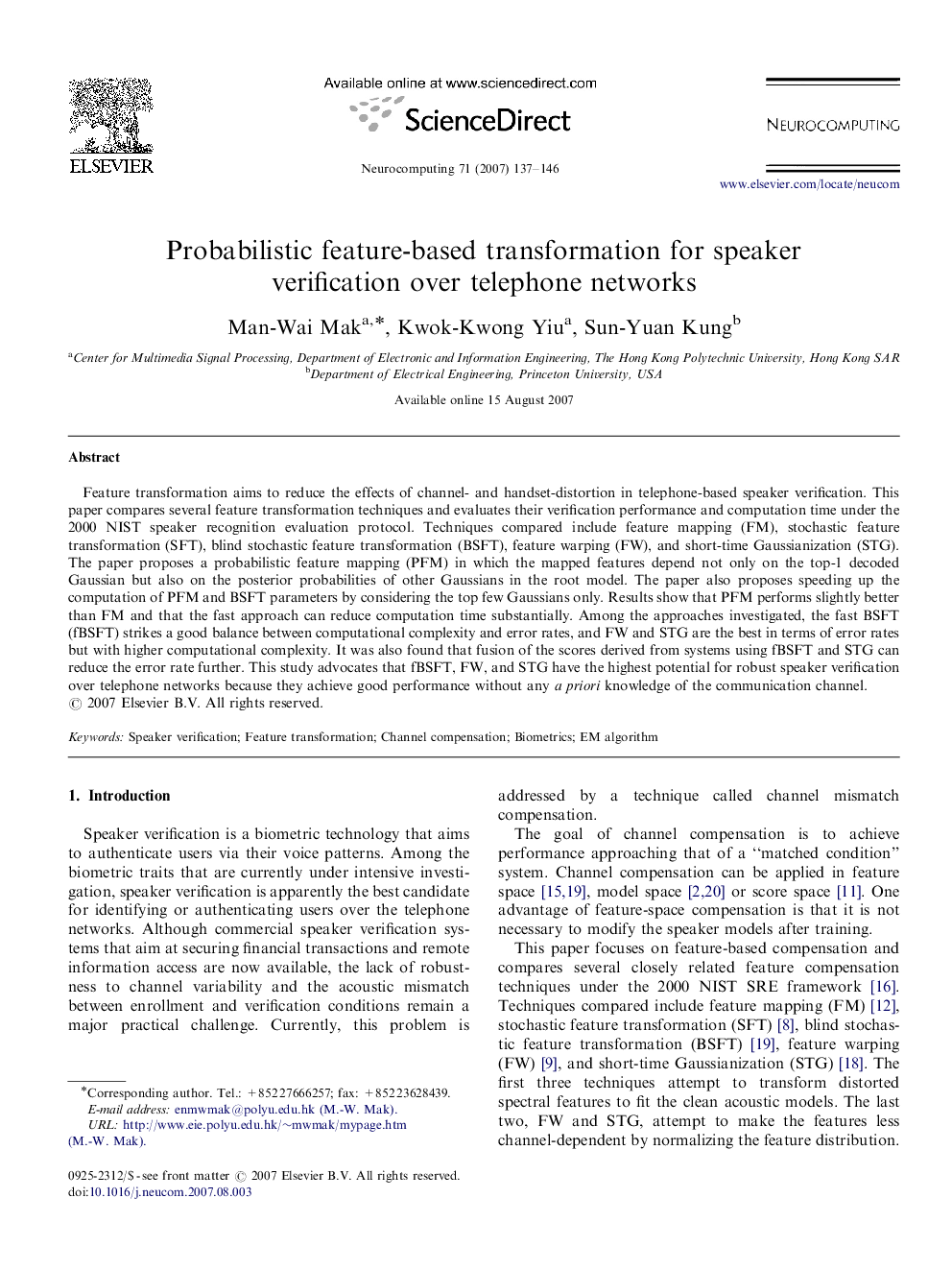| Article ID | Journal | Published Year | Pages | File Type |
|---|---|---|---|---|
| 410815 | Neurocomputing | 2007 | 10 Pages |
Feature transformation aims to reduce the effects of channel- and handset-distortion in telephone-based speaker verification. This paper compares several feature transformation techniques and evaluates their verification performance and computation time under the 2000 NIST speaker recognition evaluation protocol. Techniques compared include feature mapping (FM), stochastic feature transformation (SFT), blind stochastic feature transformation (BSFT), feature warping (FW), and short-time Gaussianization (STG). The paper proposes a probabilistic feature mapping (PFM) in which the mapped features depend not only on the top-1 decoded Gaussian but also on the posterior probabilities of other Gaussians in the root model. The paper also proposes speeding up the computation of PFM and BSFT parameters by considering the top few Gaussians only. Results show that PFM performs slightly better than FM and that the fast approach can reduce computation time substantially. Among the approaches investigated, the fast BSFT (fBSFT) strikes a good balance between computational complexity and error rates, and FW and STG are the best in terms of error rates but with higher computational complexity. It was also found that fusion of the scores derived from systems using fBSFT and STG can reduce the error rate further. This study advocates that fBSFT, FW, and STG have the highest potential for robust speaker verification over telephone networks because they achieve good performance without any a priori knowledge of the communication channel.
